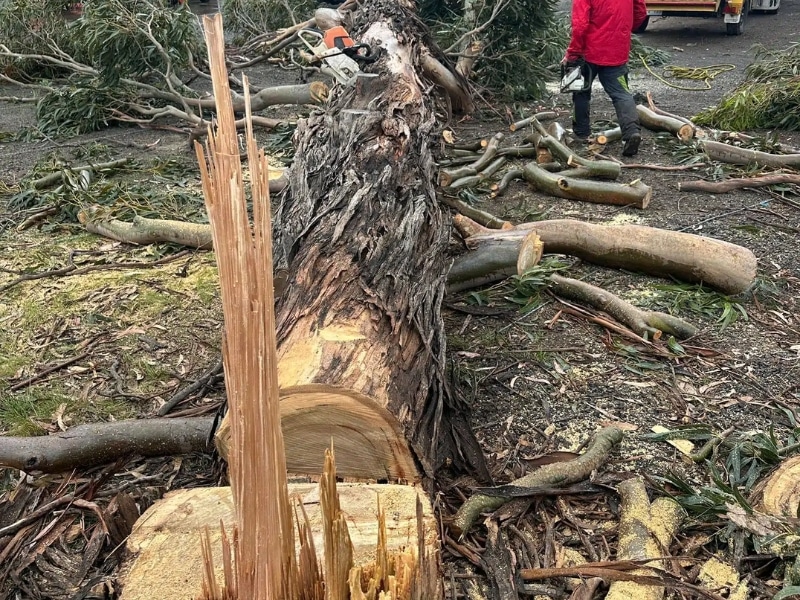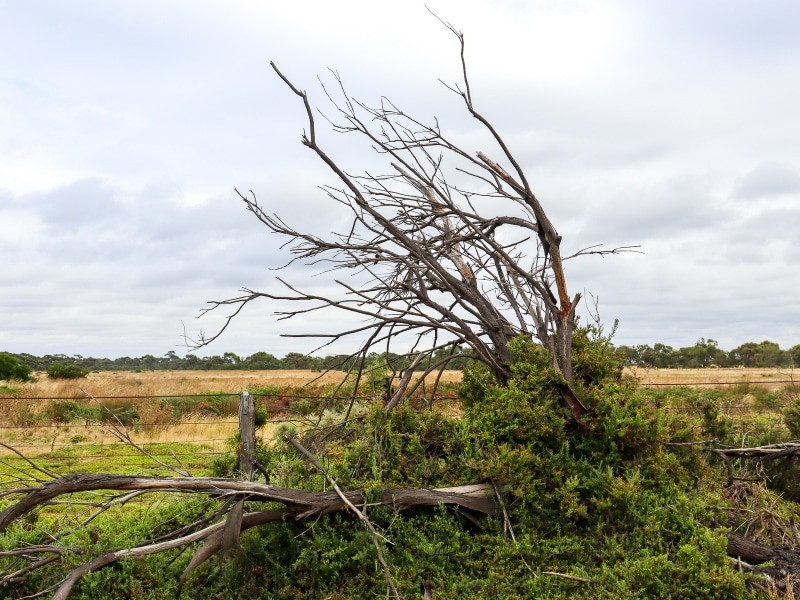Removing dead tree hazards isn’t just a tidy-up job — it’s essential for keeping your property and those around it safe. Even if a dead tree looks stable, its structure is weakening by the day. Without the nutrients and moisture it once drew from the ground, the timber dries out, becoming brittle and unstable. This article unpacks the key dangers of delay and the smartest way to handle dead trees on your property.
What dangers can arise from leaving a dead tree standing?
Dead trees don’t hold their shape the way healthy ones do — and that’s where the risk starts.
- Branches often snap without warning, posing a serious danger to people and pets.
- Weakened trunks can collapse during storms, causing damage to fences, vehicles, or buildings.
- Infestations from pests like termites and beetles take hold easily, spreading to other trees or nearby structures.
- Diseases thrive in decaying wood, increasing the risk to your landscape’s overall health.
Once dead, a tree no longer defends itself. The risk of structural failure only grows with time. These hazards aren’t always visible from the outside, making early action critical.
Why do property owners often delay removing a dead tree?
Putting off removing a dead tree is common, but it can lead to significant consequences.
- Initial costs may feel steep, especially if the tree looks like it’s not causing harm.
- Some people hope the tree will last through another season, underestimating the internal decay.
- The tree may still offer shade or privacy, making the idea of removal less appealing.
- It’s easy to misjudge the urgency, especially if the tree hasn’t moved in months.
But dead trees aren’t frozen in time — their condition worsens. What looks solid one week can collapse the next. This is how the potential damage caused by dead standing trees often catches property owners off guard.
How can ignoring a dead tree worsen your safety risks?
Leaving a dead tree untouched can lead to a chain reaction of avoidable problems.
- Wood becomes fragile and prone to sudden breaks, even in light wind.
- Fungi and rot spread through the root system, affecting surrounding vegetation.
- Insects such as carpenter ants and borers move from the tree into structures, causing hidden damage.
- In fire-prone areas, dried-out timber increases the risk of property loss.
A dead tree doesn’t stay dormant. As the decay spreads, it becomes more unstable and expensive to remove. Learning how dead branches affect tree health and structure can help you spot when a tree has become more of a hazard than a habitat.
What’s the best approach for safely removing a dead tree?
Dead tree removal should always be handled with care and expertise — it’s not worth the DIY risk.
- Begin with a tree assessment conducted by a certified arborist to determine the level of decay.
- Create a removal plan that considers nearby hazards, such as buildings or power lines.
- Use the right gear to ensure each limb comes down safely, especially from height.
- Clear the stump and primary roots, so you don’t invite pests or regrowth.
Safe removal helps avoid costly surprises and keeps your landscape healthy. It’s one of the smartest ways to discover reliable solutions for removing dead trees safely and efficiently without added stress.
If you’re unsure whether to hire help or go it alone, this table breaks down the key differences:
| Factor | DIY Removal | Professional Removal |
| Safety risk | Minimal tools and experience | Low-trained with proper safety equipment |
| Time required | Longer – multiple days or weekends | Shorter – often completed in one day |
| Equipment access | Basic tools only | Access to industry-grade machinery |
| Disposal and clean-up | Requires separate arrangements | Usually included in the service |
| Legal compliance | Uncertain knowledge of regulations | Full compliance with local council rules |
| Risk of property damage | Higher – less control over branches | Lower–controlled limb-by-limb removal |
Can experts make removing dead trees faster and safer?
Professional arborists aren’t just tree cutters — they’re trained to spot and manage risk at every step.
- They identify structural weak points before removal, ensuring a controlled process.
- Their specialised tools allow for precise cuts, avoiding damage to surrounding areas.
- They work faster and cleaner, with full site clean-up and waste disposal.
- Insured services cover unexpected outcomes, reducing liability for property owners.
Their insight can also help prevent larger ecological issues. For example, leaving dead timber in place can attract harmful species. One clear risk in parts of Australia is the spread of how polyphagous shot-hole borers threaten tree health, particularly when decaying trees provide the perfect habitat for infestation. Removing compromised trees promptly plays a role in stopping these pests from spreading to healthy vegetation nearby.
Does removing a snag help preserve the surrounding area?
Yes — taking out a dead tree has positive ripple effects across your whole yard.
- Other plants benefit from restored light, air, and water flow, improving their growth.
- Healthy trees face less disease pressure, as root rot and fungal spores are cleared out.
- Deadwood pests are removed, lowering the chance of infestation across your landscape.
- Landscapes look neater and feel safer, boosting property appeal and usability.
Dead snags don’t contribute to the health of your landscape — they drag it down. Removal supports the long-term health of your plants and soil, reducing the need for chemical treatments and replanting.
What should you do after removing a snag from your property?
Tree removal isn’t the end of the job — it’s a reset for your yard’s health.
- Check for soil compaction or root remnants, which can hinder new growth.
- Replant with native or climate-adapted species, suited to your local conditions.
- Mulch the area and water it well, encouraging healthy soil biology to return.
- Set up regular health checks for remaining trees, especially if they’re older or near structures.
These steps help prevent problems from recurring and provide your landscape with a strong foundation to build upon. Managing each stage carefully ensures that you avoid the same situation again down the track.
Final thoughts
Ignoring a dead tree won’t keep your property safe — it only delays the inevitable. As decay spreads and pests take hold, the risks increase and become harder to control. Acting now protects your home, your landscape, and everyone who sets foot on your property. Reach out to the team at The Yard to discuss safe tree removal options that fit your needs and prevent future headaches.



